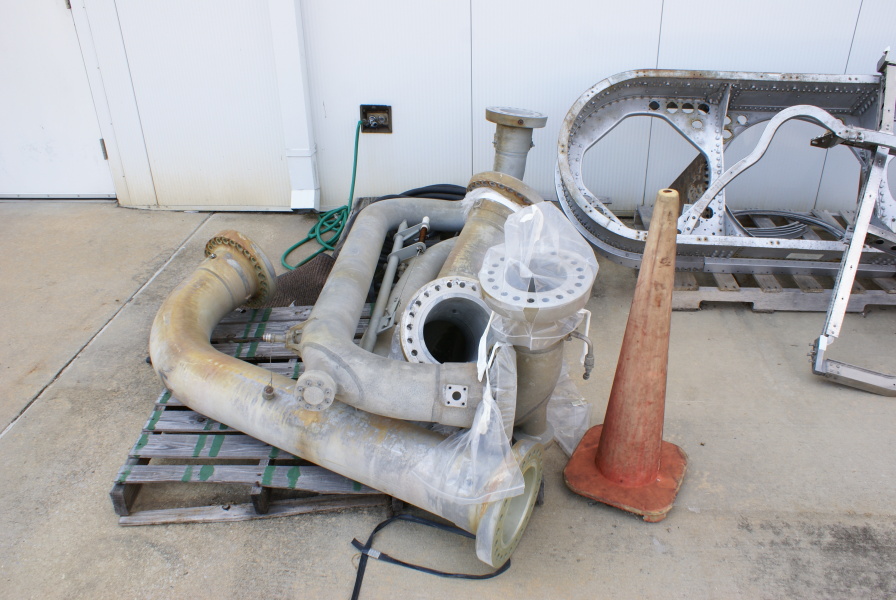| Prev |
heroicrelics.org F-1 Engine Disassembly Site Index F-1 Engine High-Pressure Ducts Gallery |
Next |
dsc95836.jpg
Overall walk-around of the high-pressure ducts.
Picture 3 of 4.
The front-and left-most duct is the No. 1 LOX high-pressure duct; the left-hand end of the duct attaches to the LOX turbopump and the right end to the No. 1 main LOX valve.
The longest duct (whose end is resting on the No. 1 LOX duct) is the No. 1 fuel high-pressure duct; the back end of the duct as it's laying attaches to the fuel turbopump and the front end to the No. 1 main fuel valve.
Refer to the No. 1 side of the forward end of the engine to see these two ducts in their more familiar, installed location.
The tan-colored duct whose opening is facing the camera (without any plastic wrap still covering an opening) is the No. 2 LOX high-pressure duct; the front end of the duct as it's laying attaches to the LOX turbopump and the back end to the No. 2 main LOX valve.
Most of the No. 2 fuel high-pressure duct, the bottom-most duct and the duct whose right-hand side sticks nearly straight up out of the pile (with the plastic closure covering its opening), is buried in the pile. The front (straight up) end attaches to the fuel turbopump and the other end (obscured by the No. 2 LOX duct) to the No. 2 main fuel valve.
Refer to the No. 2 side of the forward end of the engine to see these two ducts in their more familiar, installed location.
I didn't recognize it when taking the photos (and I didn't recognize it until I was nearly ready to upload this photo set), but nestled in between the two fuel high-pressure ducts is an F-1 thrust chamber throat security closure shaft. Luckily, it was still there during my next visit to MSFC.

| Time picture taken | Thu Sep 12 14:13:34 2013 |
| Location picture taken |
Building 4205 Marshall Space Flight Center Huntsville, AL |
| Prev |
heroicrelics.org F-1 Engine Disassembly Site Index F-1 Engine High-Pressure Ducts Gallery |
Next |